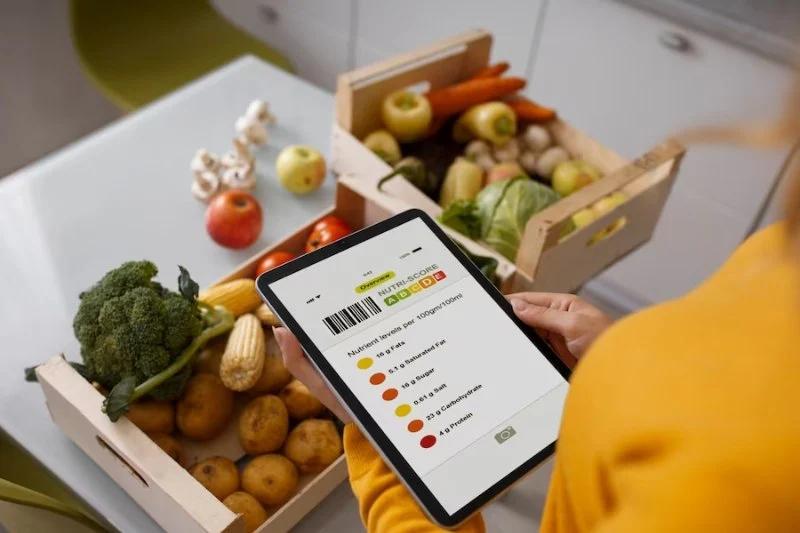
How Restaurants Are Using Blockchain and Traceability to Support Food Transparency in Australia
- Introduction to Blockchain in Restaurants
- Benefits of Blockchain for Food Transparency
- Real-Life Examples of Blockchain in Australian Restaurants
- How Traceability Boosts Consumer Trust
- The Future of Blockchain in the Australian Restaurant Industry
Introduction to Blockchain in Restaurants
In recent years, blockchain technology has revolutionized industries from finance to logistics, and now it is making its mark in the food and restaurant sectors. Blockchain offers a secure, transparent way to trace the journey of food from farm to table. By implementing blockchain, restaurants in Australia are providing consumers with greater visibility into where their food comes from and how it is produced.

SWEET CREMA CAFE
SydneyCouncil of the City of SydneyNew South Wales
Piccadilly Food Court, Level 1/210 Pitt St, Sydney NSW 2000, Australia
1. What is Blockchain?
Blockchain is a decentralized, digital ledger system that records transactions in a secure and transparent way. Each “block” contains information, and once recorded, it cannot be changed. This immutability makes blockchain an ideal solution for ensuring the transparency of food supply chains. For restaurants, it means they can track and verify the origins of ingredients in real-time, providing customers with information about their meals' sourcing.
Benefits of Blockchain for Food Transparency
Blockchain's role in food transparency is gaining traction due to its ability to address several critical issues in the food industry. It offers clear benefits that can help both restaurants and consumers.

Ten Stories
SydneyCouncil of the City of SydneyNew South Wales
68 Market St, Sydney NSW 2000, Australia
1. Enhanced Traceability
One of the most significant advantages of using blockchain in restaurants is the enhanced traceability it provides. With blockchain, restaurants can track every step of a food item’s journey, from the farm where it was grown to the supplier who delivered it. This level of transparency helps ensure the food's quality and safety, making it easier to identify where issues occur in the supply chain.
2. Greater Food Safety
Foodborne illnesses are a major concern, but blockchain can reduce risks by offering a transparent and reliable system for tracing the origins of ingredients. If there is a contamination issue, restaurants can quickly trace the affected products back to their source and eliminate the risk to consumers. This kind of fast response helps mitigate potential health hazards.
3. Building Consumer Trust
In an era of conscious consumption, consumers are more aware of where their food comes from and how it is produced. Blockchain allows restaurants to provide clear, verifiable information about the origins of ingredients, their production processes, and sustainability efforts. By offering this level of transparency, restaurants can foster trust with their customers and differentiate themselves in a competitive market.
Real-Life Examples of Blockchain in Australian Restaurants
Australia’s restaurant industry has been quick to adopt blockchain technology, with several innovative establishments using it to enhance food transparency. Below are a few examples of how Australian restaurants are utilizing blockchain for traceability:
1. The Co-op in New South Wales
The Co-op, a popular restaurant in New South Wales, has integrated blockchain technology into its sourcing practices. Customers can scan a QR code on the menu to learn about the origin of the ingredients in their meal, including information on the farm, the supplier, and sustainability practices. The Co-op’s commitment to transparency allows diners to make informed choices about the food they consume.
2. Fishburners’ Farm-to-Table Concept
Fishburners, a Sydney-based farm-to-table restaurant, has partnered with blockchain companies to trace seafood and produce from local farms. Through blockchain, diners can access real-time information about how their food was sourced and the environmental impact of production. The restaurant has built a loyal customer base by promoting transparency and sustainability in its sourcing methods.
How Traceability Boosts Consumer Trust
Traceability is a cornerstone of food transparency, and blockchain is an ideal tool for enhancing it. By implementing blockchain, restaurants not only improve their operational efficiency but also gain the trust of their customers.
1. Direct Access to Information
Customers can now access detailed information about their meals with the simple scan of a QR code. This transparency enables them to know exactly where their food comes from and what it went through before it arrived on their plates. For example, they can verify whether the meat was ethically sourced or whether the vegetables are grown using organic practices.
2. Meeting Consumer Demands for Ethical Practices
Consumers today are increasingly concerned with the ethical implications of their food choices. By providing traceability through blockchain, restaurants can offer detailed insights into sustainability efforts, such as whether the food was locally sourced, whether it was farmed sustainably, and whether workers were paid fairly. This builds consumer confidence and encourages more responsible dining choices.
The Future of Blockchain in the Australian Restaurant Industry
Blockchain technology has the potential to reshape the way restaurants operate in Australia. As the demand for transparency continues to grow, blockchain could become the standard for tracking and verifying food sources. In the future, we may see more restaurants adopting blockchain for various purposes beyond traceability, such as ensuring fair wages for workers or verifying environmental claims.
1. Integration with Other Technologies
The future of blockchain in the restaurant industry could see it integrated with other technologies such as Internet of Things (IoT) devices and artificial intelligence (AI). These technologies could work together to improve inventory management, predict food trends, and further enhance traceability efforts. The combination of these innovations could revolutionize food safety, customer experience, and operational efficiency.
2. Widespread Adoption and Consumer Expectations
As blockchain becomes more mainstream, consumer expectations around transparency will likely rise. Restaurants that adopt blockchain early on will have a competitive edge by catering to the growing demand for ethical, sustainable, and transparent dining options.







 Georgie Boy's Coffee Co - Westfield Sydney Central Plaza4.0 (56 reviews)
Georgie Boy's Coffee Co - Westfield Sydney Central Plaza4.0 (56 reviews) Coffee Shop3.0 (19 reviews)
Coffee Shop3.0 (19 reviews) Planar Restaurant4.0 (3872 reviews)
Planar Restaurant4.0 (3872 reviews) El Corte – Argentinian Steakhouse4.0 (332 reviews)
El Corte – Argentinian Steakhouse4.0 (332 reviews) Grill'd Burgers - Westfield Sydney4.0 (916 reviews)
Grill'd Burgers - Westfield Sydney4.0 (916 reviews) Nanashi & Amahouse4.0 (58 reviews)
Nanashi & Amahouse4.0 (58 reviews) How Australian Restaurants Are Fusing Technology With Dining Ambience
How Australian Restaurants Are Fusing Technology With Dining Ambience What Makes a Great Brunch Spot in Sydney? We Asked Locals | Sydney Eats Explorer
What Makes a Great Brunch Spot in Sydney? We Asked Locals | Sydney Eats Explorer Best Dining Spots in Australia for Mid-Week Dining Deals and Happy Hour Finds
Best Dining Spots in Australia for Mid-Week Dining Deals and Happy Hour Finds The Best Sushi and Sashimi Restaurants in Perth for Premium Seafood Lovers
The Best Sushi and Sashimi Restaurants in Perth for Premium Seafood Lovers The Best Caribbean-Inspired Dining Spots in Australia for Something Offbeat
The Best Caribbean-Inspired Dining Spots in Australia for Something Offbeat The Best Korean BBQ Places in Sydney to Book Now | Sydney Eats Explorer
The Best Korean BBQ Places in Sydney to Book Now | Sydney Eats Explorer